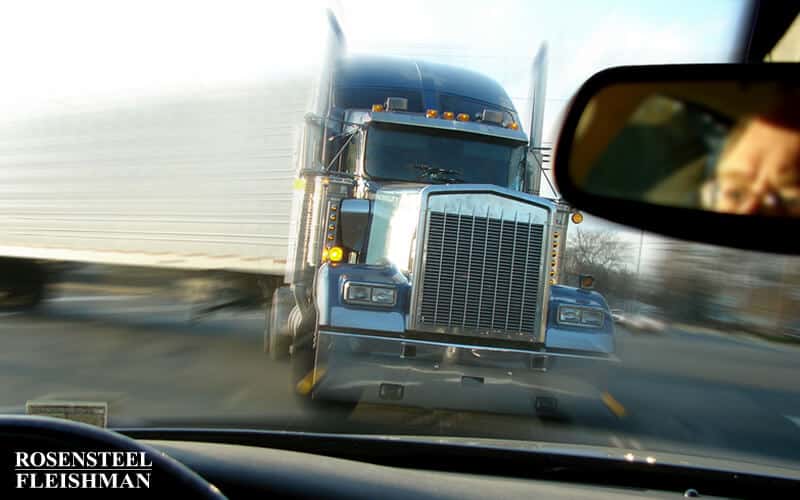Car accidents can change everything in a matter of seconds. From dealing with insurance adjusters to managing injuries and property damage, the aftermath can feel overwhelming. During this time, finding the right Charlotte car accident lawyer can make a huge difference in how confidently you move forward. Whether the crash was a fender bender or […]

Pedestrian Struck and Killed in Rowan County
A pedestrian was killed early this morning on a rural Rowan County road. As the pedestrian was walking along the road, he was hit and killed by a tractor-trailer somewhere between 4:30 a.m. and 5:30 a.m. WSOC-TV reports that the pedestrian was intoxicated and walking down the middle of the road. Few other details have been released about this accident, but this accident reminds us that pedestrians have duties while on roadways, as well as motor vehicles with respect to pedestrians.
First, G.S. 20-174(d) provides that “[w]here sidewalks are provided, it shall be unlawful for any pedestrian to walk along and upon an adjacent roadway.” But in the case above, on a rural county road, it is unlikely that there will be sidewalks. What do pedestrians do then? G.S. 20-174(d) goes on to state that
Where sidewalks are not provided, any pedestrian walking along and upon a highway shall, when practicable, walk only on the extreme left of the roadway or its shoulder facing traffic which may approach from the opposite direction. Such pedestrian shall yield the right-of-way to approaching traffic.
However, even though pedestrians have duties while on the roadways, G.S. 20-174(e) provides that
Notwithstanding the provisions of this section, every driver of a vehicle shall exercise due care to avoid colliding with any pedestrian upon any roadway, and shall give warning by sounding the horn when necessary, and shall exercise proper precaution upon observing any child or any confused or incapacitated person upon a roadway.
North Carolina courts have held that ""[f]ailure to yield the right of way to traffic pursuant to G.S. Sec. 20-174 does not constitute negligence per se but is some evidence of negligence." (Hofecker v. Casperson (N.C. App. 2005)) The court may enter summary judgment “against a plaintiff pedestrian only when `all the evidence so clearly establishes his failure to yield the right of way as one of the proximate causes of his injuries that no other reasonable conclusion is possible.'" In Hofecker, the North Carolina Court of Appeals held that a pedestrian who walked with his back to oncoming traffic, wore dark clothes on an unlit road at night, had alcohol and drugs in his body, came out of nowhere, and walked directly into the path of the vehicle was contributorily negligent.
However, even if a pedestrian is contributorily negligent, the defendant driver must still “exercise due care to avoid colliding with any pedestrian upon any roadway” pursuant to G.S. 20-174(e). A driver is also under the common law duty set forth by the Last Clear Chance Doctrine. The North Carolina Supreme Court held in Watson v. White (1983) that
an injured pedestrian found to be contributorily negligent must establish four elements in order to invoke the doctrine of last clear chance against the driver of the motor vehicle which struck and injured him. These are:
(1) That the pedestrian negligently placed himself in a position of peril from which he could not escape by the exercise of reasonable care; (2) that the motorist knew, or by the exercise of reasonable care could have discovered, the pedestrian's perilous position and his incapacity to escape from it before the endangered pedestrian suffered injury at his hands; (3) that the motorist had the time and means to avoid injury to the endangered pedestrian by the exercise of reasonable care after he discovered, or should have discovered, the pedestrian's perilous position and his incapacity to escape from it; and (4) that the motorist negligently failed to use the available time and means to avoid injury to the endangered pedestrian, and for that reason struck and injured him.
When a pedestrian plaintiff does not see the defendant’s vehicle, he satisfies the first element of the Last Clear Chance Doctrine because he has “negligently placed himself in a position of peril from which he could not escape by the exercise of reasonable care.”
As to the second prong of the Last Clear Chance Doctrine, North Carolina courts have held that motorists “owe a duty to all other persons using the highway, including its shoulders, to maintain a lookout in the direction in which the motorist is traveling." Therefore, if a defendant motorist was initially negligent, this shows that the driver “by the exercise of reasonable care could have discovered, the pedestrian's perilous position and his incapacity to escape from it before the endangered pedestrian suffered injury at his hands.”
The third and fourth elements of the Last Clear Chance Doctrine tend to be fact specific. For example, in Watson, where the defendant motorist was driving within the speed limit and traveling around a curve, the motorist “could not have discovered plaintiff's perilous position until she drove out of the curve” and therefore “had neither the time nor the means to avoid the injury.”
How does this summary of the law apply to the unfortunate accident from this morning? The driver of the tractor trailer owed a duty to anyone using the road, including the pedestrian walking in the middle of it. However, the pedestrian had a statutory duty to “walk only on the extreme left of the roadway or its shoulder facing traffic which may approach from the opposite direction” and “yield the right-of-way to approaching traffic.” We do not know what the pedestrian was wearing, but it was reported that he was walking in the middle of the road and intoxicated. It is likely that the rural road was unlit in the dark early of the morning. Therefore, the pedestrian is mostly likely contributorily negligent.
What about the Last Clear Chance Doctrine? This analysis turns on facts that are not available in the reports of the accident. We don’t have information about the speed of the vehicle or the conditions of the road so we don’t know if “the motorist had the time and means to avoid injury to the endangered pedestrian by the exercise of reasonable care after he discovered, or should have discovered, the pedestrian's perilous position and his incapacity to escape from it.”
If you have been injured in an accident, it is important to look at all the facts and contact an attorney at Rosensteel Fleishman Car Accident & Injury Lawyers (704) 714-1450 to discuss your options.
Additional Car Accident Articles
It’s never easy to deal with the aftermath of a car accident, especially when you were simply a passenger. You may be left wondering who’s responsible for your injuries, how your medical bills will be covered, and what steps you should take next. While you focus on healing, having an experienced Charlotte car wreck lawyer […]
Car accidents have a way of turning your day—and sometimes your whole life—upside down. One minute you’re driving through Charlotte like any other day, and the next, you’re dealing with a damaged vehicle, medical visits, and a flood of questions about what to do next. It’s common to feel overwhelmed in the hours and days […]
After a car accident, emotions often run high. You're dealing with pain, property damage, and a growing list of questions—especially when it comes to your rights and how to move forward. If you're thinking about hiring a Charlotte car accident lawyer, it's natural to feel unsure about where to begin. Who should you trust? What […]
